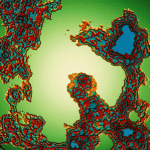Preventing nausea is a common medical use of cannabis. But nausea is a multi-faceted feeling. Motion sickness, morning sickness, the flu, or chemotherapy all cause slightly different versions of this discomfort. Scientists at the University of Guelph, led by Linda Parker, have spearheaded our understanding of how CBD, THC, CBDA, and THCA exert their anti-nausea effects.
They focus particularly on anticipatory nausea, a severe malaise produced while expecting chemo or another sickening situation. This placebo-like discomfort is hard to treat with typical anti-emetics, but cannabinoids often work, at least in animal models. A new publication by Erin Rock and others at the University of Guelph adds to this literature. They inhibited FAAH, thus preventing the breakdown of anandamide, oleoylethanolamide (OEA), and palmitoylethanolamide (PEA). Blocking FAAH prevented nausea, apparently because OEA and PEA activated the gene-regulating nuclear receptor PPARa. This effect was seen in a previous study from this group, where FAAH inhibition prevented nausea through both PPARa and CB1. In their new study, they demonstrated that PPARa’s medical effect can be produced in a single brain region — injecting a tiny amount of FAAH inhibitor into the ventral pallidum was sufficient to suppress nausea. Why is it worth examining the mechanisms of cannabinoids in such detail? Well, because it’s a complicated situation, and the more we understand, the better we can harness cannabinoids in treating nausea. From previous research, it appears that THC synergizes with CBD and CBDA, while CBG and CBD may interfere with each other.
Read study: The ventral pallidum as a critical region for fatty acid amide hydrolase inhibition of nausea
Adrian Devitt-Lee is a research scientist and longtime Project CBD contributor. © Copyright, Project CBD. May not be reprinted without permission.







